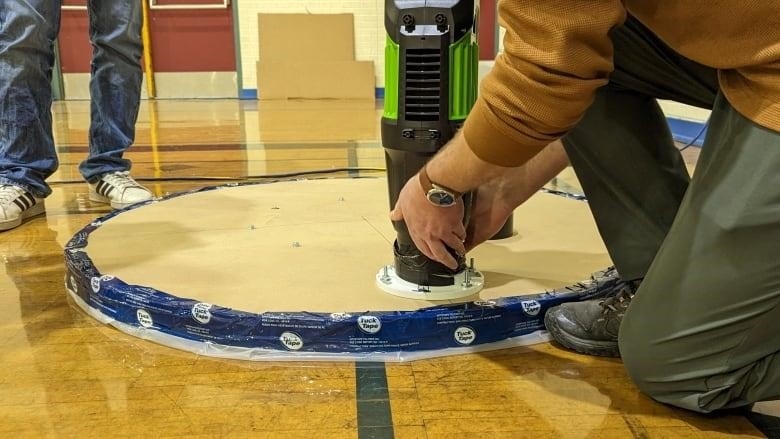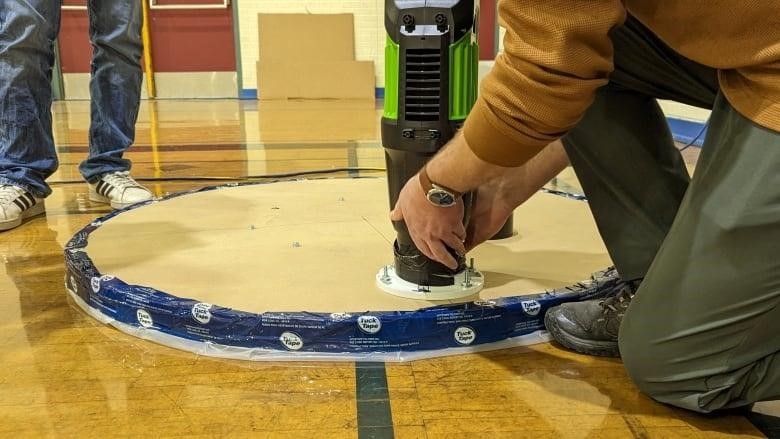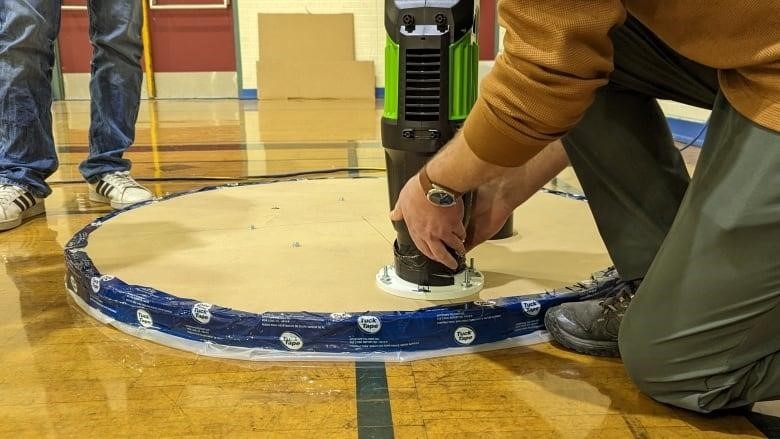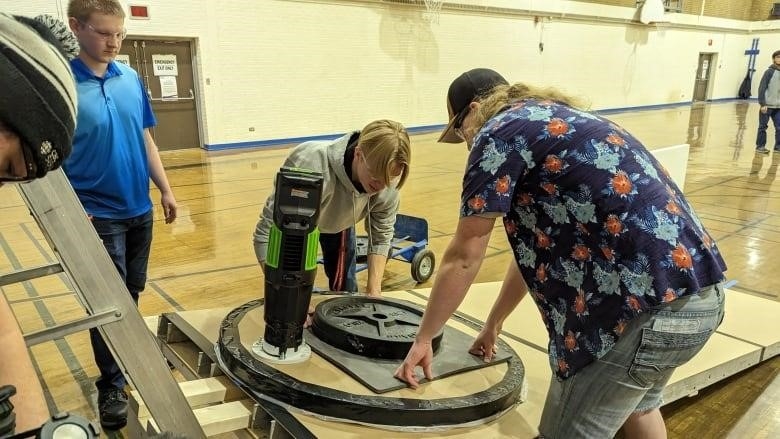
“This was a fun way to use what we’ve been learning in class,” says a student
Earlier this week, a few students at Saskatchewan Polytechnic in Saskatoon were lifted into the air by cordless leaf blowers and floated around the gym.
The first-year mechanical engineering technologists at the post-secondary school spent about a month building hovercraft. They wanted to test their speed and balance under different design parameters and take an exploratory approach to making and building.
“We weren’t sure how it would work,” student Carter Pierce said just before he sat down on the plywood and polystyrene foam frame of one hovercraft.
Pierce said, “We weren’t sure, so we played around with how many holes were on the inside and other things.”
“Before this, I didn’t even know how hovercrafts worked.”

Kurt Soucy, who teaches the class and runs the program, says that the leaf blower blows air into a cap made of polyethylene plastic sheeting and then blows air out underneath it to make an air cushion. This makes it easy for the hovercraft to move across the ground with little resistance.
Four groups of four to six students were given the task of getting the materials and building the units. Each unit was slightly different from the others, but they were all about one meter wide.

Soucy said, “We know this is a chance for first-year students to work in a team and be creative.”
He also said, “I just think it’s fun.”
Monday, the students put a few metal plates that each weighed about 20 kilograms (45 pounds) on their craft and let them float down a wooden ramp to test their speed.
WATCH: Students at Saskatchewan Polytechnic make their own hovercraft:
A small group of second-year students cheered and clapped as one hovercraft sped down the ramp, through timing gates with ultrasonic motion detectors, and into the hands of students on the other side of the gym.
Soucy said that the program is always looking for ways to give students real-world experience.
“That’s what gets them ready for what they might have to do as a technologist.”

Matthew Berube, another first-year student who tried out his group’s hovercraft, said that building a hovercraft and working with your hands makes the usual school curriculum less dry.
“We just finished our first semester, and you learn a lot of new equations and formulas,” he said. “This was a fun way to use what we’re learning in class.”
The hovercraft project was given to students for the first time this year, but Soucy said he plans to keep it going in some way.
